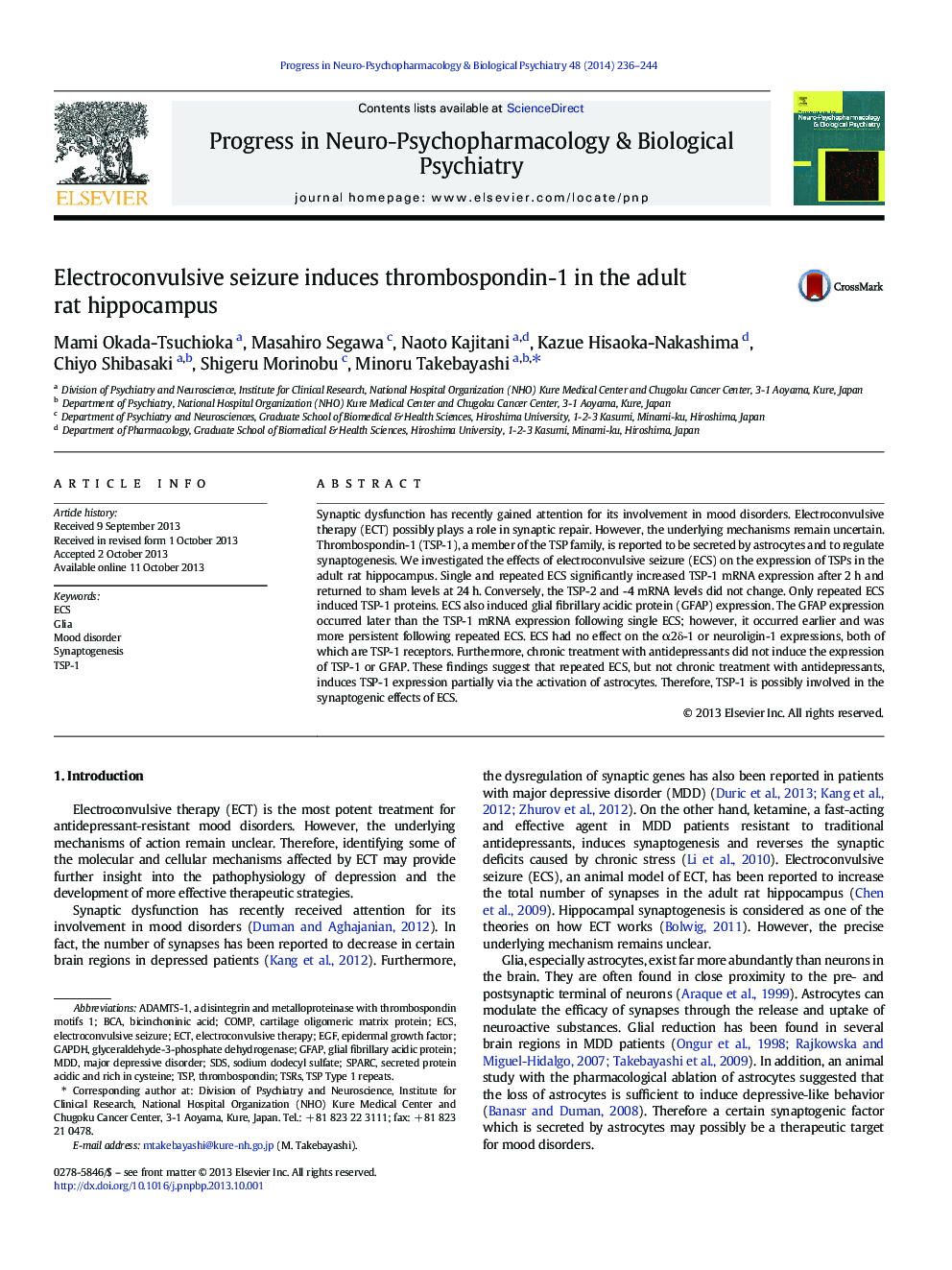| Article ID | Journal | Published Year | Pages | File Type |
|---|---|---|---|---|
| 5844548 | Progress in Neuro-Psychopharmacology and Biological Psychiatry | 2014 | 9 Pages |
Abstract
Synaptic dysfunction has recently gained attention for its involvement in mood disorders. Electroconvulsive therapy (ECT) possibly plays a role in synaptic repair. However, the underlying mechanisms remain uncertain. Thrombospondin-1 (TSP-1), a member of the TSP family, is reported to be secreted by astrocytes and to regulate synaptogenesis. We investigated the effects of electroconvulsive seizure (ECS) on the expression of TSPs in the adult rat hippocampus. Single and repeated ECS significantly increased TSP-1 mRNA expression after 2 h and returned to sham levels at 24 h. Conversely, the TSP-2 and -4 mRNA levels did not change. Only repeated ECS induced TSP-1 proteins. ECS also induced glial fibrillary acidic protein (GFAP) expression. The GFAP expression occurred later than the TSP-1 mRNA expression following single ECS; however, it occurred earlier and was more persistent following repeated ECS. ECS had no effect on the α2δ-1 or neuroligin-1 expressions, both of which are TSP-1 receptors. Furthermore, chronic treatment with antidepressants did not induce the expression of TSP-1 or GFAP. These findings suggest that repeated ECS, but not chronic treatment with antidepressants, induces TSP-1 expression partially via the activation of astrocytes. Therefore, TSP-1 is possibly involved in the synaptogenic effects of ECS.
Keywords
ADAMTS-1SynaptogenesisEGFBCAMDDCOMPTSP-1TSPSPARCGAPDHGFAPECTSDSECsMajor depressive disordermood disorderbicinchoninic acidThrombospondinElectroconvulsive seizureElectroconvulsive therapysodium dodecyl sulfateepidermal growth factorGlial fibrillary acidic proteinsecreted protein acidic and rich in cysteineCartilage oligomeric matrix proteinglyceraldehyde-3-phosphate dehydrogenaseGlia
Related Topics
Life Sciences
Neuroscience
Biological Psychiatry
Authors
Mami Okada-Tsuchioka, Masahiro Segawa, Naoto Kajitani, Kazue Hisaoka-Nakashima, Chiyo Shibasaki, Shigeru Morinobu, Minoru Takebayashi,
